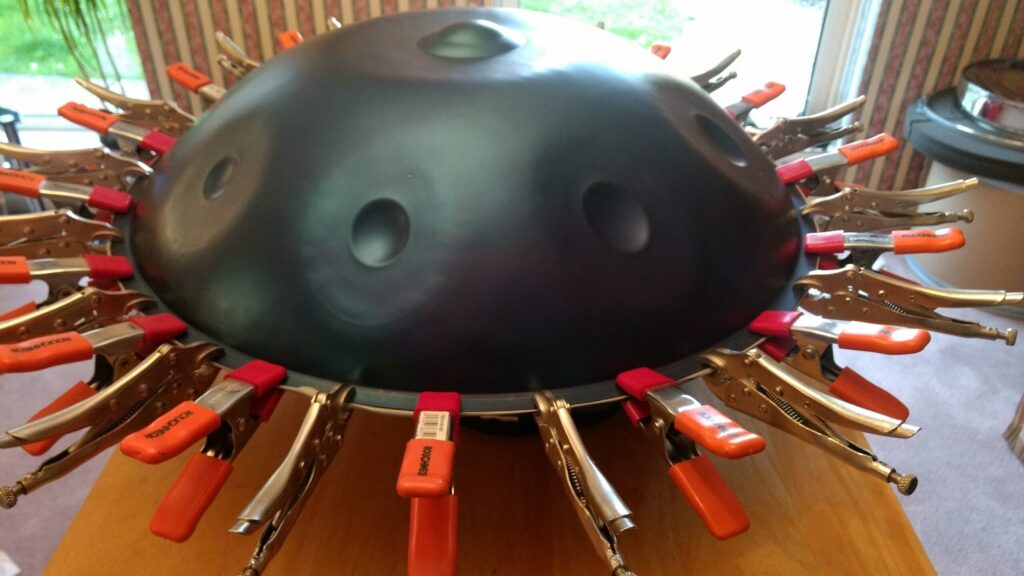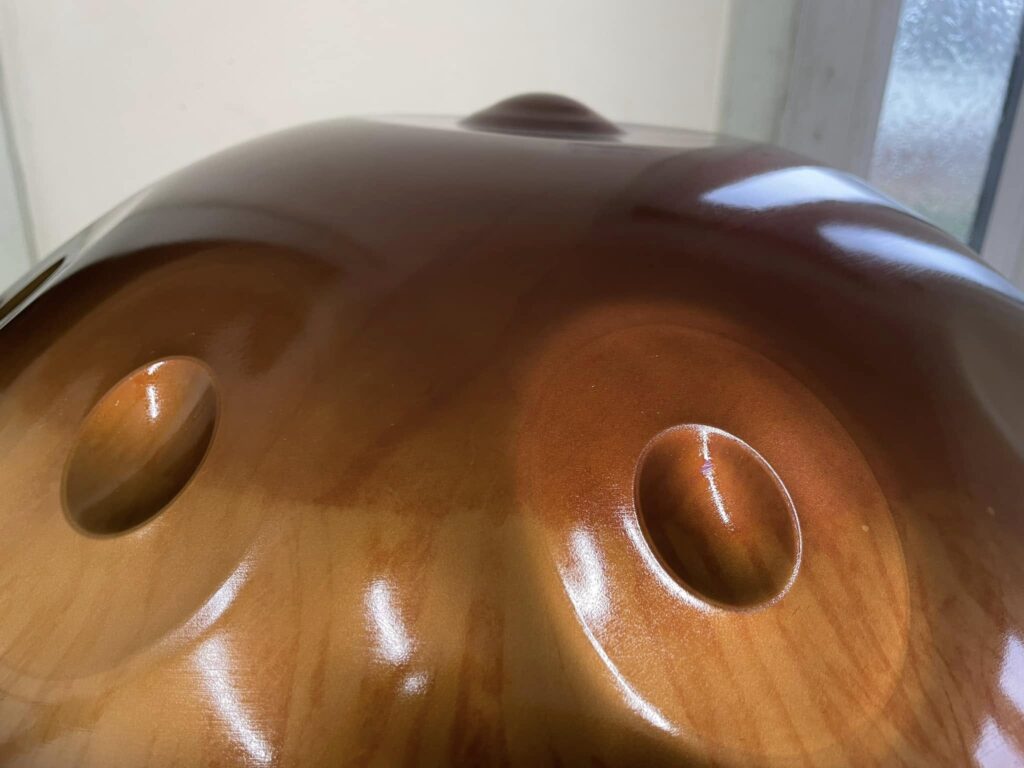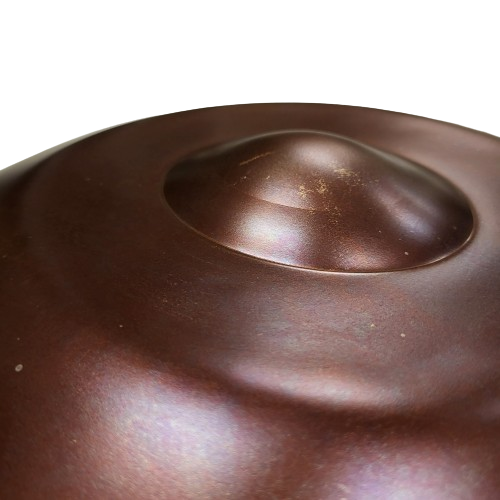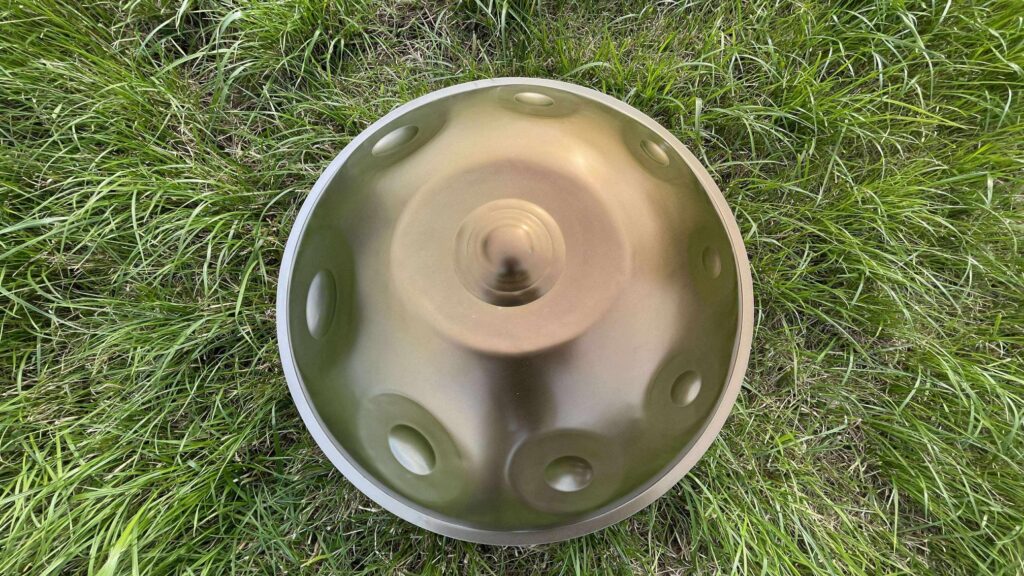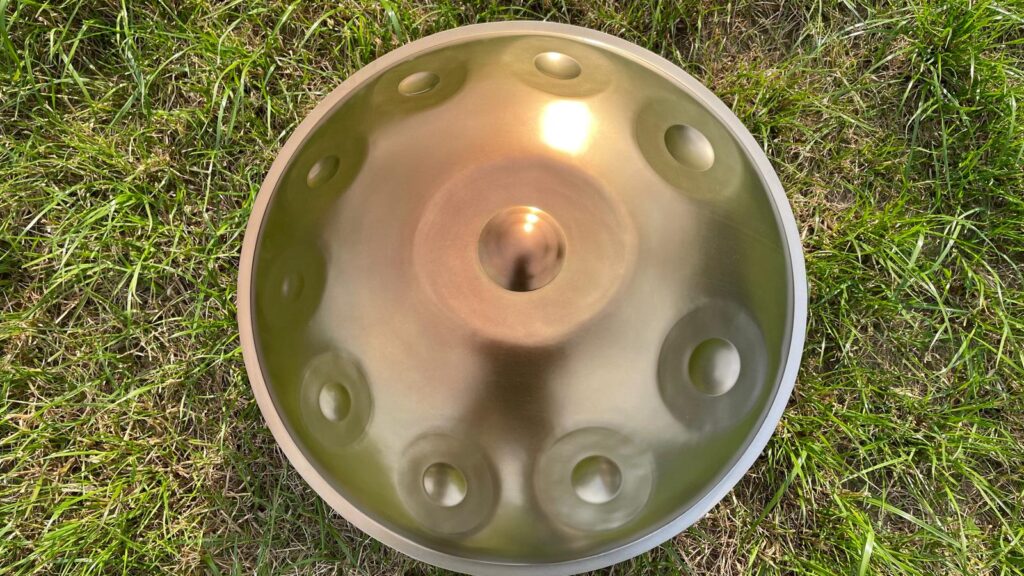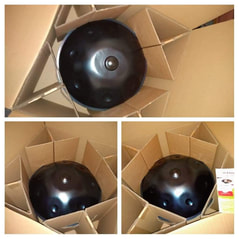Handcrafted and
Air-hammer
shaped INSTRUMENTs
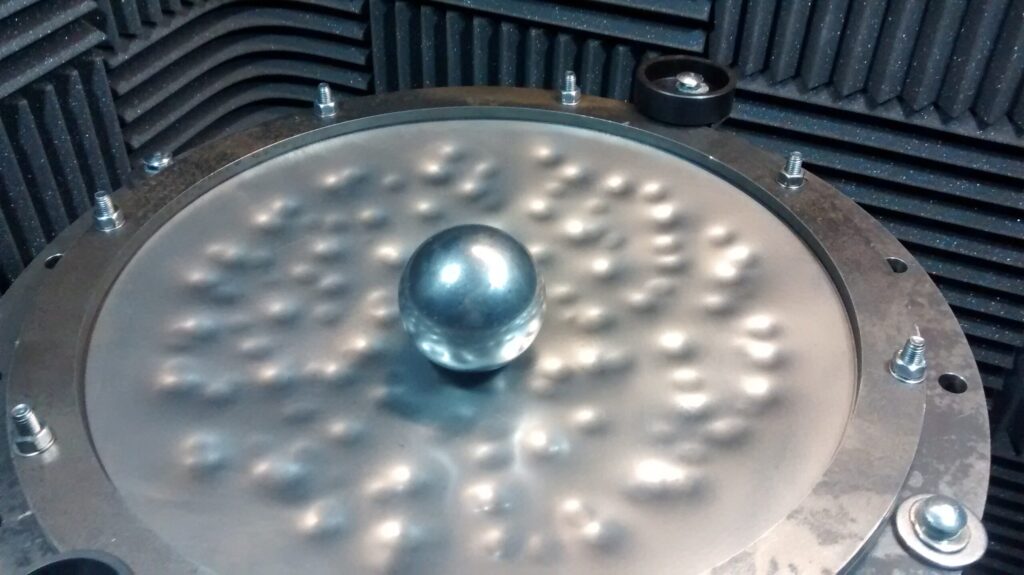
what's the difference?
When it comes to crafting a high-quality HandPan, the technique used to shape the instrument has a profound impact on its tone, feel, and personality. At PanStream, we use both hand-hammering and air-hammering methods, depending on the design, material, and acoustic goals of the instrument.
But what exactly is the difference between these two techniques? And how do they affect the final sound?
What Is a Hand-Hammered HandPan?
- Hand-hammering is the traditional method of forming a HandPan. The maker uses a mallet or hammer to manually strike and shape the steel shell, tone fields, and central dome (ding).
This method requires:
Thousands of controlled strikes by hand
Deep knowledge of how steel behaves under pressure
Patience, precision, and a trained ear
Advantages of hand-hammering:
Warm, organic sound with rich overtones
Greater control over tone field shaping
Often seen as more “artisanal” or soulful
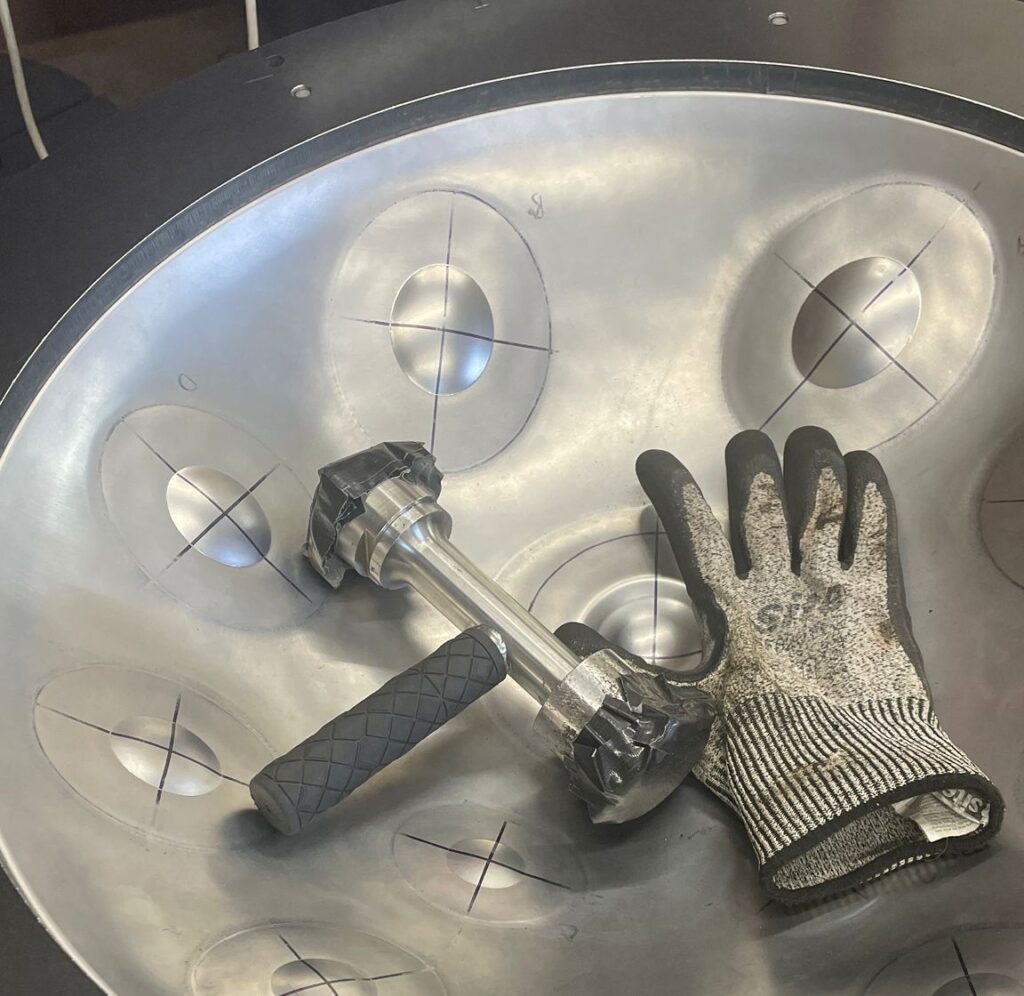

Hand-hammered PanStream HandPan: D Kurd 18
What Is an Air-Hammered Handpan?
Air-hammering (also known as pneumatic hammering) uses a mechanical tool that delivers thousands of rapid, consistent strikes to shape the steel shell.
It’s a faster process and is commonly used to:
Rough-form shells with high precision
Prepare raw material before hand-finishing
Produce more consistent results across batches
Advantages of air-hammering:
Faster production times
More consistent shaping of shells
Excellent for early-stage forming
With the right skill and care, air-hammered pans can sound just as beautiful – especially when combined with fine hand shaping and tuning.
Air-hammered PanStream HandPan: D Kurd 16
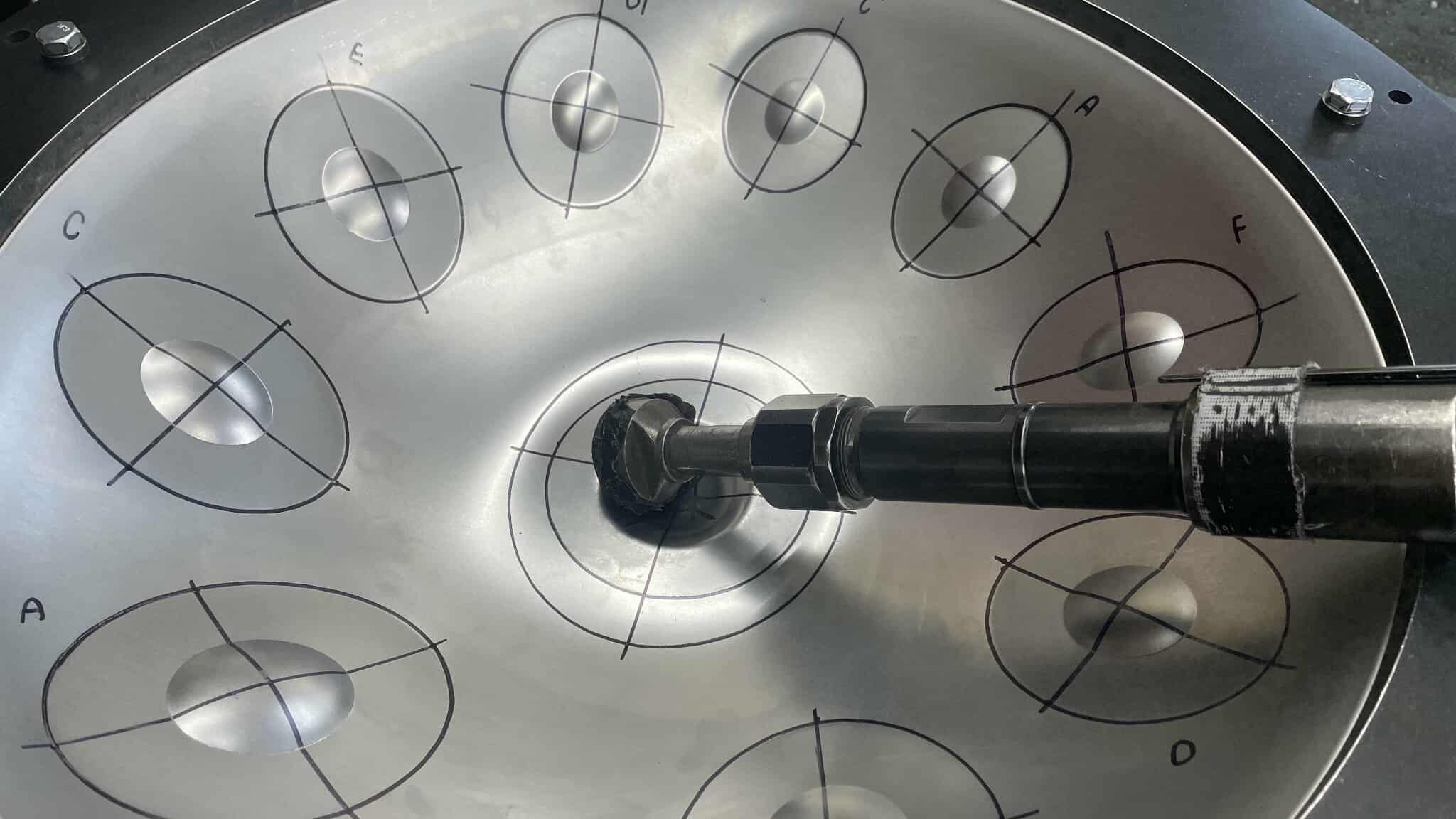
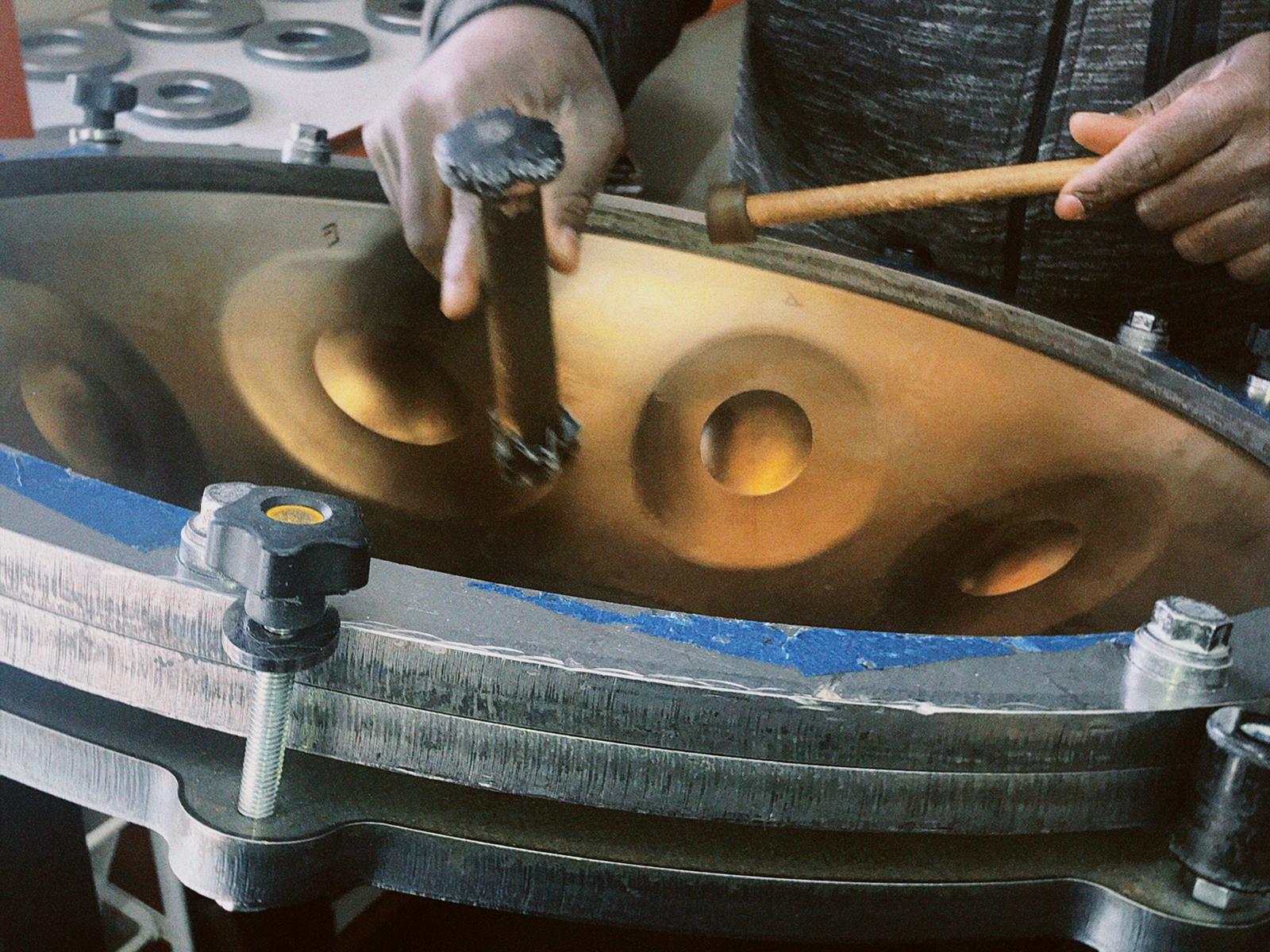
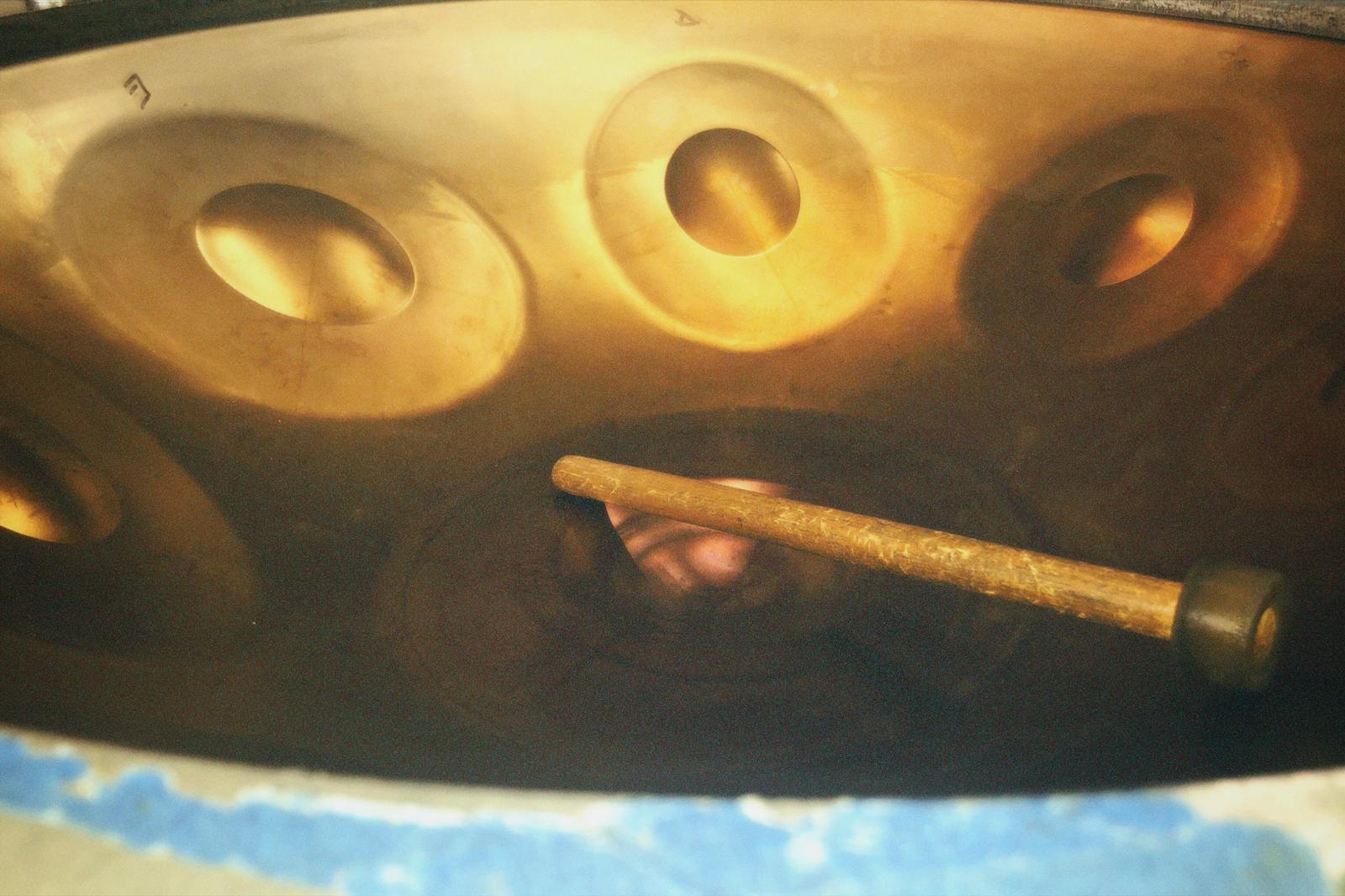
A Quick Note on Factory-Pressed Handpans
You may also come across HandPans that are mass-produced in factories using hydraulic presses or stamping machines. While they may look like HandPans, their acoustic quality is typically not comparable to handcrafted or air-hammered instruments.
Sound Comparison: Hand-Hammered vs Air-Hammered
While both methods can produce professional-grade instruments, the subtle differences in tone are what many players find fascinating.
Hand-hammered HandPans often have:
Softer attack
Deeper harmonics
A more “alive” or natural feel
Air-hammered HandPans often sound:
Clean and consistent
Slightly brighter or more focused
Ideal for modern, percussive playing styles
Ultimately, the method is just one part of the story – the skill of the maker and the quality of tuning matter most.
Which Is Better?
At PanStream, we don’t believe one method is “better” than the other. Instead, we choose the approach based on:
Desired tone and sustain
Type of steel used
Tuning goals
Aesthetic and acoustic balance
In fact, many of our instruments are made using a hybrid process: air-hammered for forming, then hand-hammered and hand-tuned for acoustic precision.
Final Thoughts
Whether you prefer the raw artistry of hand-hammered pans or the sleek precision of air-hammered instruments, both approaches offer beautiful, resonant results when crafted with care.
Have a listen to both videos above and let your ears decide.

